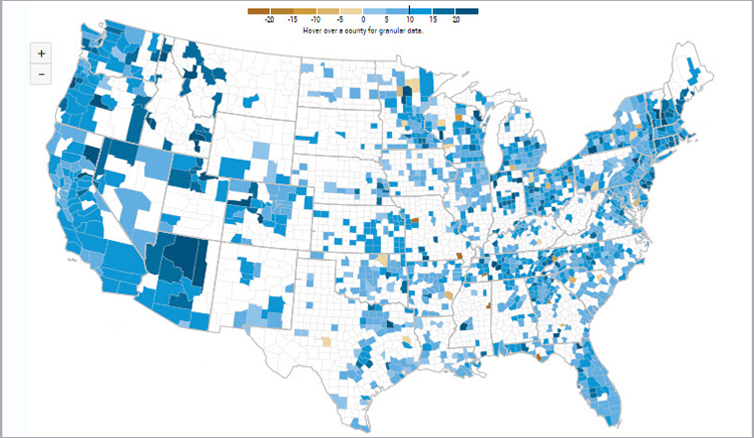Economic Research

By Jaison R. Abel and Richard Deitz

By Joseph Delehanty, Gizem Kosar, and Wilbert van der Klaauw

By Sushant Acharya, Ozge Akinci, Silvia Miranda-Agrippino, and Paolo A. Pesenti

By Sushant Acharya, Ozge Akinci, Silvia Miranda-Agrippino, and Paolo A. Pesenti

By Sushant Acharya, Ozge Akinci, Silvia Miranda-Agrippino, and Paolo A. Pesenti

By Itamar Drechsler, Hyeyoon Jung, Weiyu Peng, Dominik Supera, and Guanyu Zhou
RESEARCH TOPICS

The mission of the Applied
Macroeconomics and Econometrics
Center (AMEC) is to provide intellectual
leadership in the central banking
community in the fields of macro and
applied econometrics.
Data Releases
Global Supply Chain Pressure Index
(Updated: Monthly)
Measuring the Natural Rate of Interest
(Updated: Quarterly)
Multivariate Core Trend Inflation
(Updated: Monthly)
The New York Fed DSGE Model
(Updated: Quarterly)
New York Fed Staff Nowcast
(Updated: Weekly)
Outlook-at-Risk
(Updated: Monthly)
Treasury Term Premia
(Updated: Daily)
Yield Curve as a Leading Indicator
(Updated: Monthly)
Data Releases
Global Supply Chain Pressure Index
(Updated: Monthly)
Measuring the Natural Rate of Interest
(Updated: Quarterly)
Multivariate Core Trend Inflation
(Updated: Monthly)
The New York Fed DSGE Model
(Updated: Quarterly)
New York Fed Staff Nowcast
(Updated: Weekly)
Outlook-at-Risk
(Updated: Monthly)
Treasury Term Premia
(Updated: Daily)
Yield Curve as a Leading Indicator
(Updated: Monthly)

Monthly surveys conducted by the New York Fed track the sentiment of executives at regional manufacturing and service-sector firms regarding business conditions.
Data Releases
Empire State Manufacturing Survey
(Updated: Monthly)
Business Leaders Survey
(Updated: Monthly)
Regional Business Surveys:
Special Topics
(Updated: Quarterly)
Data Releases
Empire State Manufacturing Survey
(Updated: Monthly)
Business Leaders Survey
(Updated: Monthly)
Regional Business Surveys:
Special Topics
(Updated: Quarterly)
Richard K. Crump, Stefano Eusepi, Emanuel Moench, and Bruce Preston, Staff Report 1150, April 2025
Stefan Avdjiev, Leonardo Gambacorta, Linda S. Goldberg, and Stefano Schiaffi, Staff Report 1149, April 2025
Gizem Koşar and Davide Melcangi, Staff Report 1148, April 2025
Marco Del Negro, Ibrahima Diagne, Keshav Dogra, Pranay Gundam, Donggyu Lee, and Brian Pacula, Staff Report 1147, April 2025
Tobias Adrian, Michael Fleming, and Kleopatra Nikolaou, Staff Report 1146, April 2025
Nicola Cetorelli, Gonzalo Cisternas, and Asani Sarkar, Staff Report 1145, March 2025
Beverly Hirtle and Matthew C. Plosser, Staff Report 1144, March 2025
Itamar Drechsler, Hyeyoon Jung, Weiyu Peng, Dominik Supera, and Guanyu Zhou, Staff Report 1143, March 2025
Tools
Upcoming Events
People
Related New York Fed Content
Related External Content
By continuing to use our site, you agree to our Terms of Use and Privacy Statement. You can learn more about how we use cookies by reviewing our Privacy Statement. 
























